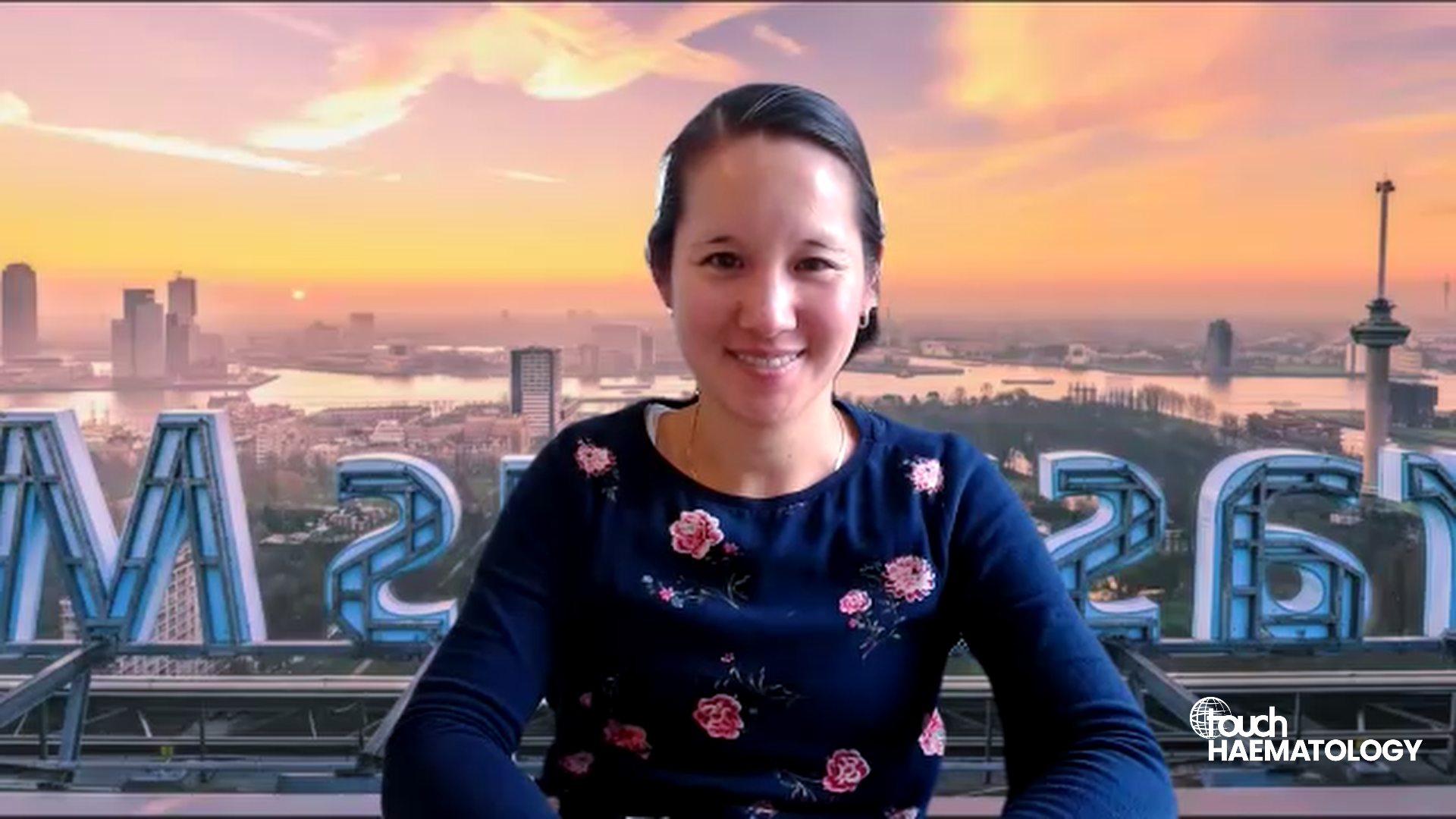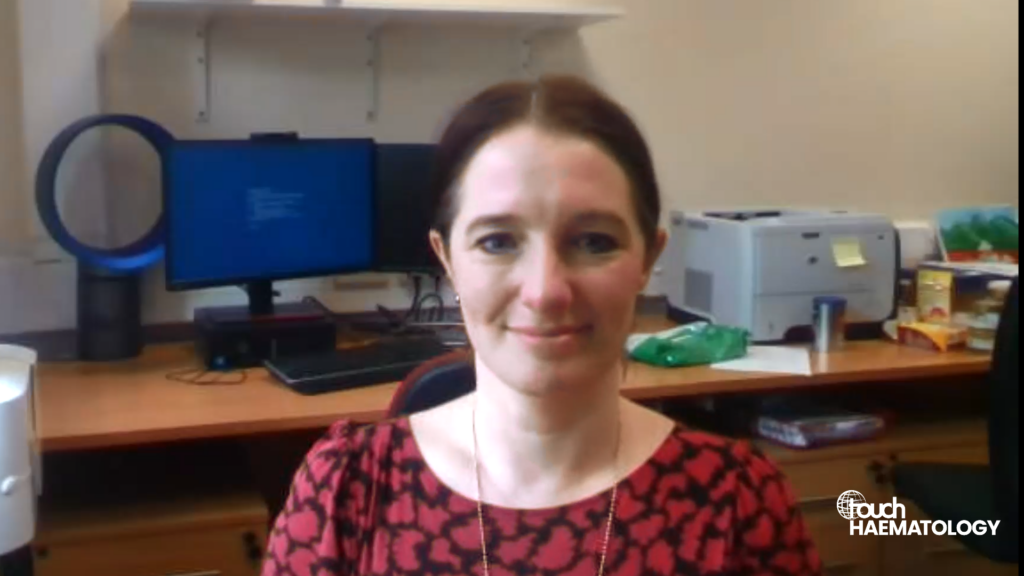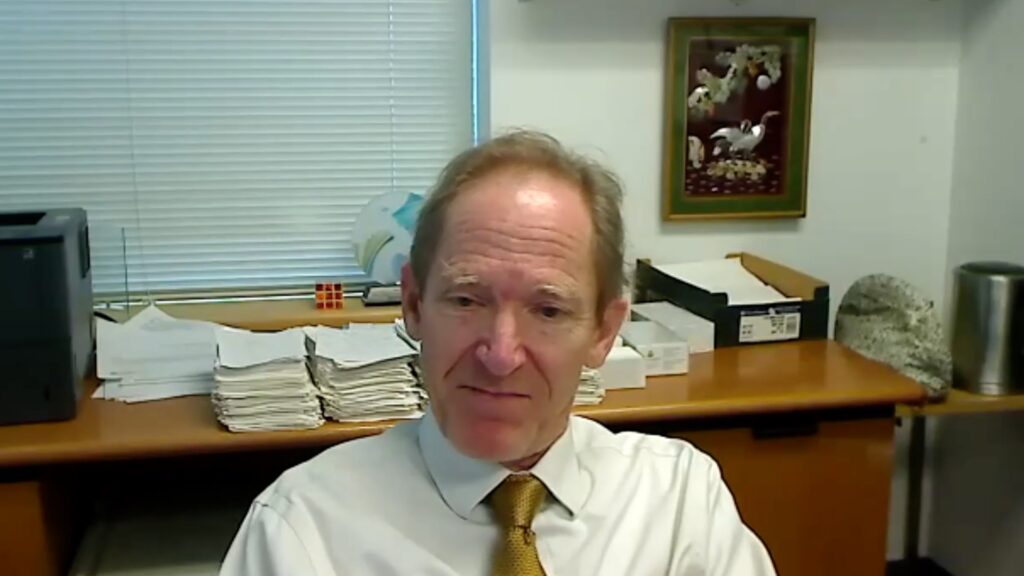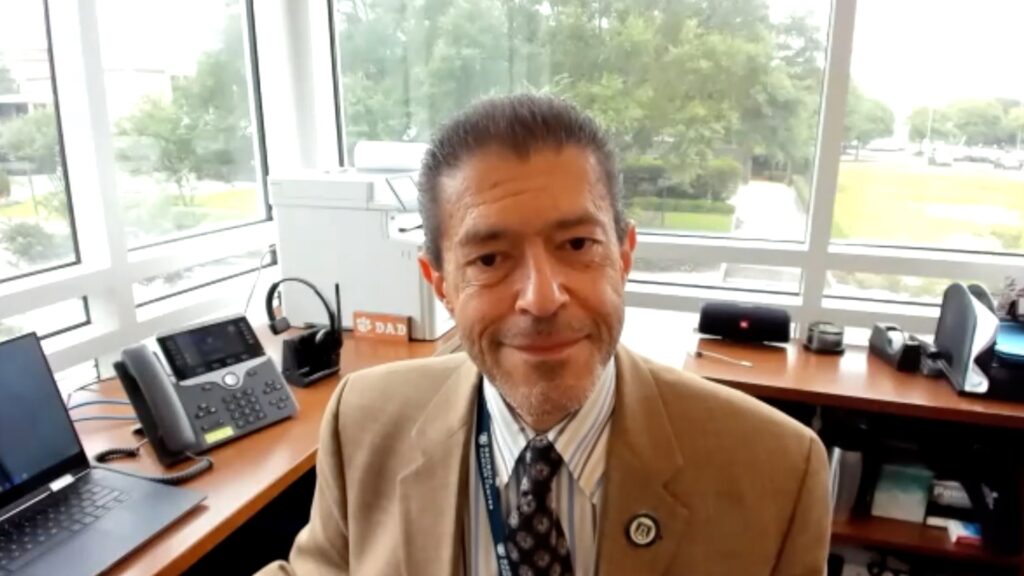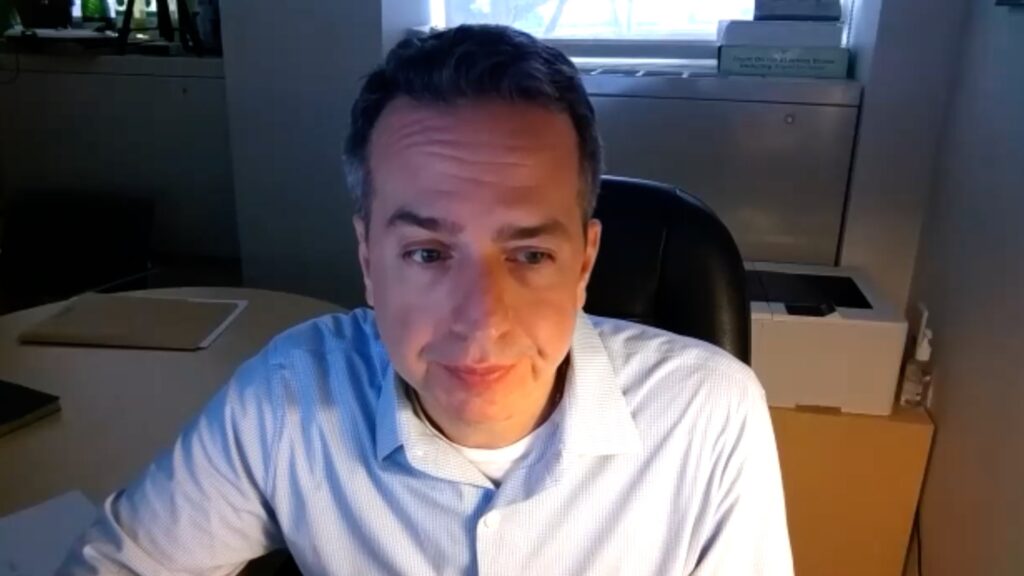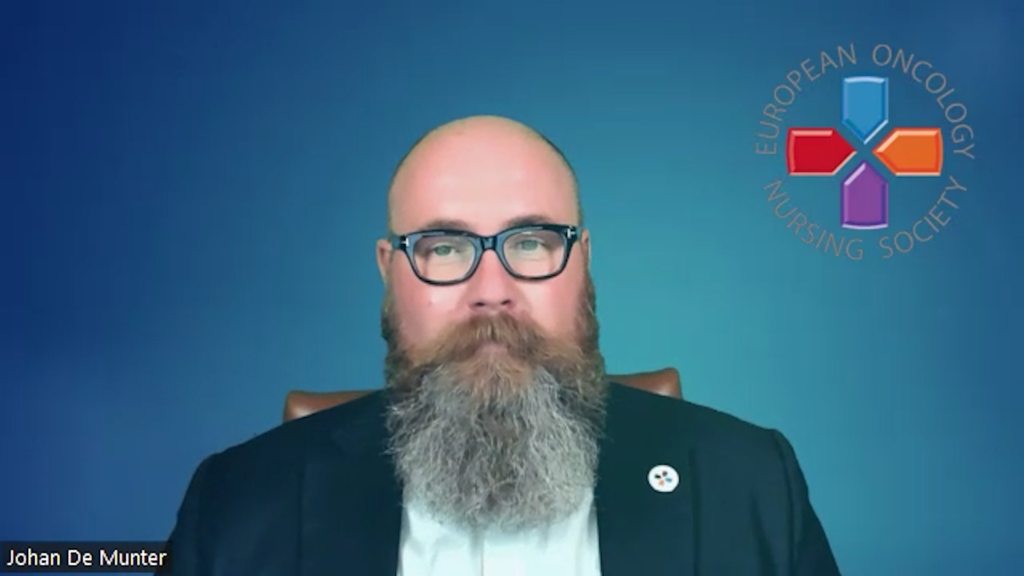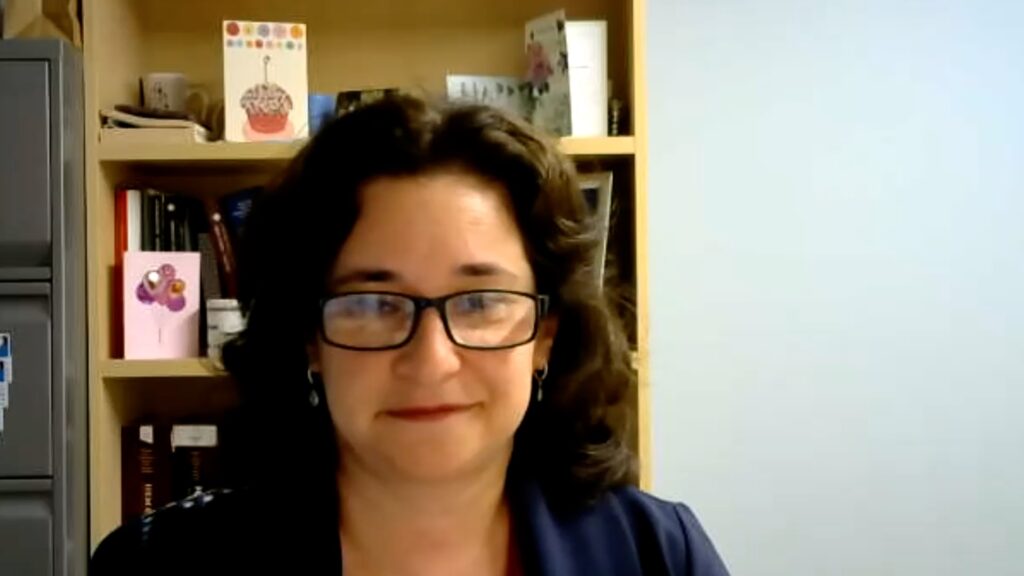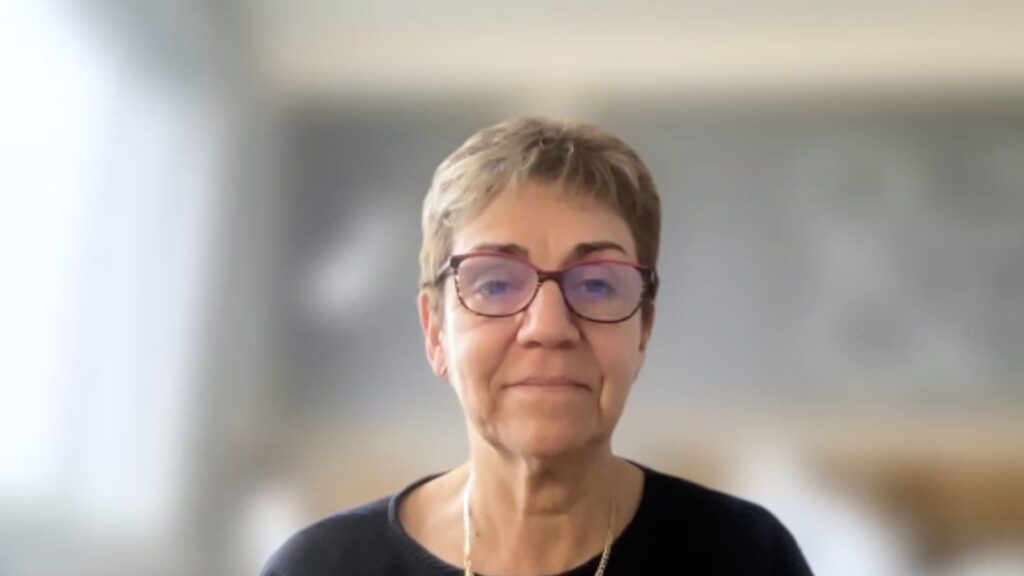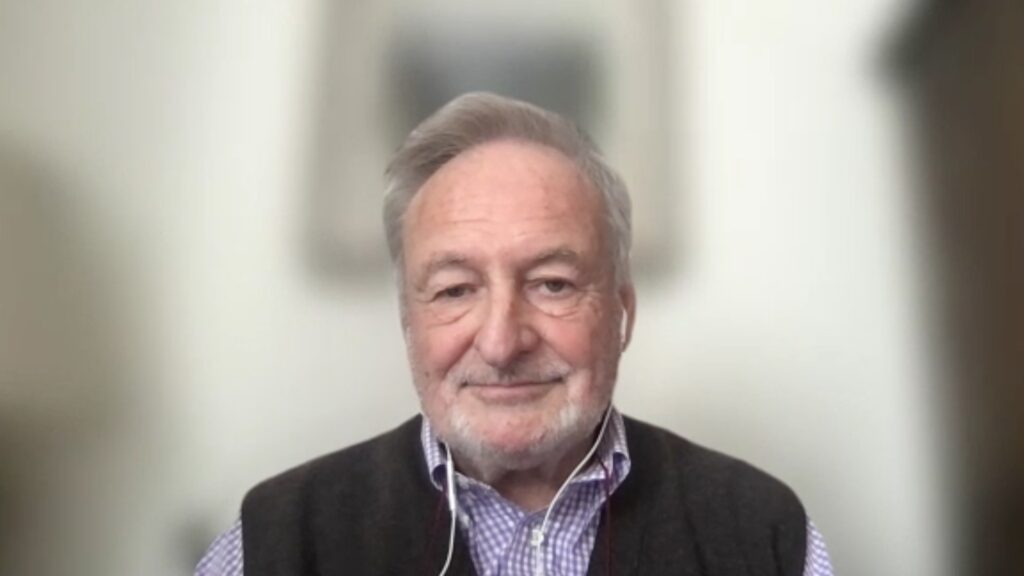TouchHAEMATOLOGY coverage of data presented at EBMT 2024:
Chimeric antigen receptor (CAR) T-cell therapy represents a ground-breaking advancement in the treatment of relapsed/refractory haematological cancers. This innovative approach harnesses the body’s own immune system to target and destroy cancer cells, and it has shown remarkable efficacy in conditions such as acute lymphoblastic leukaemia (ALL) and diffuse large B-cell lymphoma.
To gain further insights into the latest research and developments in the area, we had the privilege of speaking with Dr. Sridhar Chaganti, Consultant Haematologist at University Hospitals Birmingham, Birmingham, UK, who recently chaired the session on ‘Factors influencing outcomes in CAR T-cell therapy’ at EBMT 2024.
In our conversation Dr. Chaganti elaborated on several pioneering approaches and key data discussed during the EBMT 2024 meeting, including the use of allogeneic CAR T-cell therapies. This method shows promise in reducing the risk of Graft-versus-Host disease and enhancing cell expansion and persistence, crucial for treatment efficacy.
He also touched on innovative strategies being developed to mitigate common and severe side effects associated with CAR T-cell therapy, such as cytokine release syndrome (CRS) and immune effector cell-associated neurotoxicity syndrome (ICANS). One promising approach involves the prophylactic use of itacitinib, a JAK1 inhibitor, which has shown potential in reducing the incidence and severity of these complications.
Furthermore, Dr. Chaganti discussed new research on the impact of myeloid-derived suppressor cells (MDSCs) and other immune cell parameters which appear to correlate with better treatment outcomes. Understanding these factors could lead to more effective application of CAR T-cell therapy, improving response rates and durability of remission in patients.
These advancements highlight the continued progress being made in the field.
Questions
- What key factors influence the efficacy and safety of CAR T-cell therapy in the treatment of haematological cancers, and what challenges are commonly encountered during treatment?
- Could you share the key findings from the studies presented at EBMT 2024 which focused on factors influencing CAR T-cell therapy outcomes and discuss their potential impact on future clinical practices?
Disclosures: Dr. Sridhar Chaganti has received honoraria, and has been a member of advisory boards and speaker’s bureaus for Kite-Gilead.
This content has been developed independently by Touch Medical Media for touchHAEMATOLOGY and is not affiliated with the EBMT 50th Annual Meeting, 2024. Unapproved products or unapproved uses of approved products may be discussed by the faculty; these situations may reflect the approval status in one or more jurisdictions. No endorsement of unapproved products or unapproved uses is either made or implied by mention of these products or uses by Touch Medical Media or any sponsor. Views expressed are the speaker’s own and do not necessarily reflect the views of Touch Medical Media.
Transcript:
I am Sridhar Chaganti, I’m a Hematology Consultant and I work at the University Hospitals Birmingham here in the UK. I specialize in lymphomas, especially high-grade lymphomas, and I have a special interest in the treatment of relapsed/refractory disease with cell therapies, including stem cell transplantation, CAR T-cell therapies and immune therapies.
Q1. What key factors influence the efficacy and safety of CAR T-cell therapy in the treatment of haematological cancers, and what challenges are commonly encountered during treatment?
When we look at the different diseases for which we are applying CAR T-cell therapy at the moment, there seems to be some difference between what we are expecting as a treatment between the different diseases. So I guess in the setting of relapsed/refractory ALL, especially in children and young adults, where we are currently using Kymriah or tisa-cel (tisagenlecleucel). I think it’s fair to say it is a curative treatment for a proportion of patients at least. In the long run, we are probably curing between 30-40 percent of all patients, who are infused with these products. Similarly, in the setting of diffuse large B cell lymphoma patients.
In the relapsed/refractory diffuse large B-cell lymphoma and high-grade B-cell lymphoma setting, again, we see durable remissions in a proportion of patients beyond 4-5 years from infusion, and we would believe that many of these patients are cured of their lymphoma both in the second-line and in the third-line setting. I guess in the second-line setting, we are curing maybe around 40-50 percent of patients, and in the third-line setting around maybe 10 percent less than what we see in the second-line setting.
Now, when we move beyond these two indications it’s not entirely clear if you are offering curative treatment to patients, because either the follow-up is not long enough or we are not seeing a plateau in the survival curves. And that applies to mantle cell lymphoma, adult ALL, follicular lymphoma, where we need a much longer follow-up I guess, and also in multiple myeloma. Across these diseases we have seen that the chance of response and the durability of response does depend upon the disease burden at the time of CAR T-cell therapy, and that applies across diseases. And the higher the disease burden prior to CAR T conditioning, the less likely the patient is going to have remission or even a durable remission. And, also, we have learned that the higher the tumour burden at the time of CAR T conditioning, the more the toxicity of the treatment; both the risk of CRS (cytokine release syndrome) and ICANS (Immune effector Cell-Associated Neurotoxicity Syndrome) seems to correlate directly with the amount of tumour burden that a patient has. Also, we have seen, again, cutting across disease specialties is a pro-inflammatory condition at the time of CAR T conditioning for the patients. So if the patient has a high CRP, high ferritin, elevated LDH, they seem to do less well with CAR T-cell therapy.
Q2. Could you share the key findings from the studies presented at EBMT 2024 which focused on factors influencing CAR T-cell therapy outcomes and discuss their potential impact on future clinical practices?
So there was data being presented on allogeneic CAR T. We all know that it is a challenging area, it’s not easy. Delivering allogeneic CAR T comes with, I guess, two important limitations. So one is the risk of Graft-versus-Host disease, meaning for the allogeneic T cells. And the second is a lack of expansion or persistence because of the hosts immunity which is directed against the infused CAR T-cells. So the group from GOSH (Great Ormond Street Hospital) presented a small amount of data on their study of applying allogeneic CAR T to patients that were children with relapsed/refractory ALL, and many of them relapsing after prior CAR T-cell therapy. And they used gene editing technology to delete the TCR receptor from the CAR T-cells to try and minimize the risk of Graft-versus-Host disease. And they also deleted CD52 from the CAR T-cells so that they would provide enhanced immune depleting conditioning to patients. So that incorporates alemtuzumab, which is CD52-targeting, that being the reason for deleting CD52 from the CAR T-cells, and they have used much higher doses of fludarabine and cyclophosphamide.
But using this enhanced lymphodepleting chemotherapy and the gene editing technology, they showed very encouraging data in a small number of patients with very little risk of Graft-versus-Host disease. And there seems to be a good expansion of the CAR T-cells and persistence. So this is early data, encouraging, I guess, proof of, you know, the concept of delivering an allogeneic CAR T in this kind of setting.
We’ve also seen other data emerging. There was a very interesting set of data presented on using a prophylaxis model for CRS and ICANS, with itacitinib, which is a JAK1 inhibitor. So we know that the JAK-STAT signalling pathway is important in cytokine release from the CAR T-cells. And there have been previously some case reports on using ruxolitinib, for instance in reducing the risk of, or treating CRS. So this was a small phase II, randomized study, placebo-controlled with 20 patients in each arm roughly, using itacitinib from a few days before CAR T-cell therapy until about 4 weeks after CAR T-cell therapy.
And, again, very encouraging. There was very little risk of grade 3, or more CRS, in fact I think it was zeroing in the data presented. Very low risk of grade 3 ICANS. But overall, CRS, even low grades and overall risk of ICANS in the itacitinib-treated patients was much less compared than in the placebo-treated patients. Again, small study, but an important piece of data, and we need to see how we take it forward into our clinical practice.
There was also some very interesting data on other parameters that may be predictive of responses with CAR T-cells. A very interesting one looking at myeloid-derived suppressor cells (MDSCs), the granulocyte subtype. So this is looking at the cells in the blood of patients at the time of CAR T conditioning, and showing that patients who had higher levels of these MDSCs, the granulocyte subtype of MDSCs, at the time of CAR T conditioning, had much less chance of a response. They had reduced CAR T expansion and they had lower durable remissions.
So MDSCs are immunosuppressive-type cells and you would expect that to mediate in lower CAR T expansion, so it was nice to see that kind of data. How we take it into clinical practice and what we do with this remains an open question. I mean, what can you do to reduce the risk of a higher number of MDSCs? I guess this needs to be assessed. An interesting aspect of that study was that the MDSC level seems to correlate with the pro-inflammatory type milieu in the patients. So, again, you know, that might correlate with your CRPs, your ferritins, at the time of CAR T conditioning.
There was also some interesting data on CD4 count, and at one month post CAR T therapy as a marker of better response and durability of response. This was a small study done in patients with relapsed/refractory ALL.
Looking at MRD (measurable residual disease measurable residual disease) levels, MRD on day 7, post-CAR T, day 28 post-CART T, and looking at CD4 count at day 28 post-CART T, and they showed that a negative MRD result at day 7 and a good CD4 count – the cut-off was 135 per microlitre so a good CD4 count – at day 28, is predictive of better outcomes in these patients. Again, a small study, and we need to understand a bit more as to how we take this forward.
Interviewer/Editor: Gina Furnival
Cite: Sridhar Chaganti. Promising data in advancing CAR T-cell therapy outcomes. touchHAEMATOLOGY, May XX 2024.

